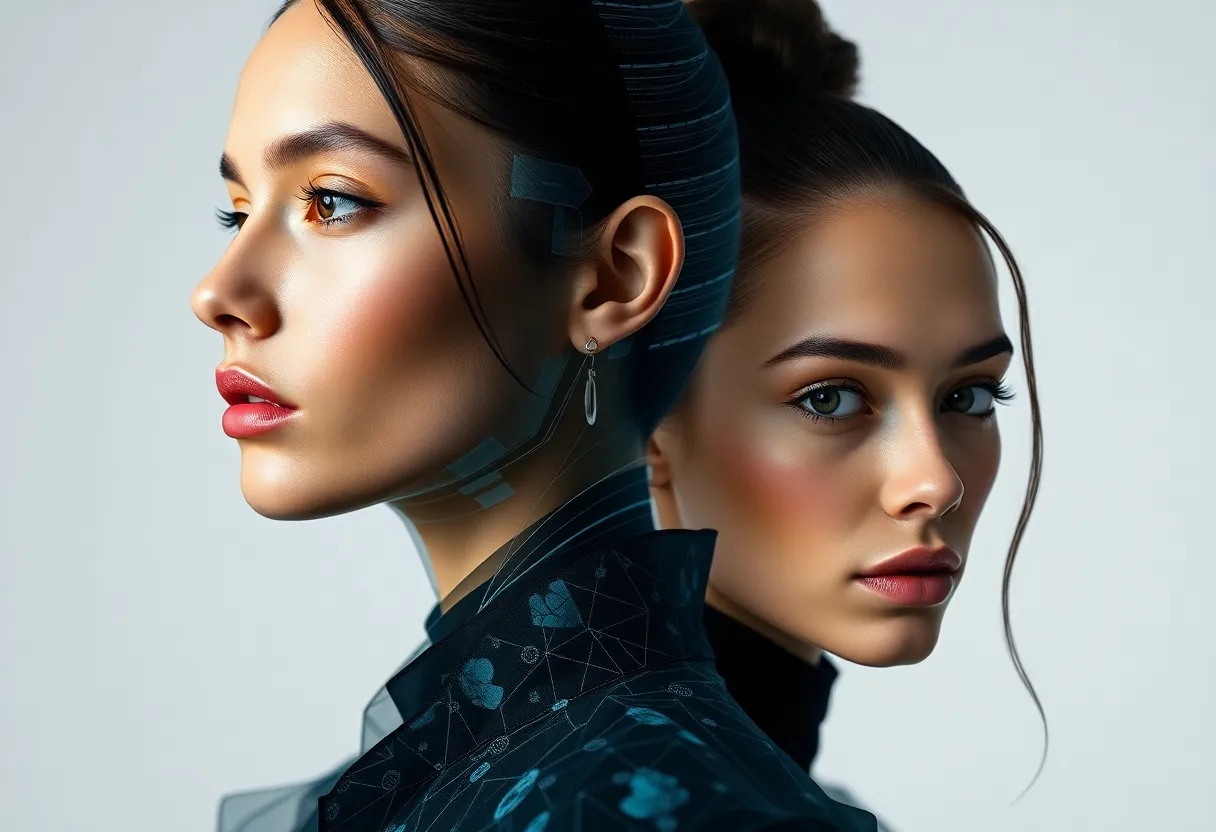News Summary
H&M is pioneering a bold new marketing strategy by creating digital twins of 30 real models, including Vilma Sjöberg. This approach leverages AI technology while giving models control over their digital likenesses. It aims to address ethical concerns and enhance representation in the fashion industry without replacing human models.
H&M Steps into the Future with Digital Twins of Models
In a groundbreaking move that merges fashion with technology, H&M has announced its plans to create digital twins of 30 real human models, including the striking Vilma Sjöberg. This initiative is part of H&M’s new marketing strategy that aims to explore the potential of artificial intelligence (AI) in the fashion realm. With the increasing chatter about the implications of AI, H&M has opted to address these concerns head-on.
A New Kind of Model
Model Vilma Sjöberg has spoken candidly about her experience with her digital twin, describing it as “exciting but unsettling.” The similarity is so uncanny that even her boyfriend had difficulty distinguishing between the real Vilma and her digital counterpart. This raises intriguing questions about how closely AI can mimic human elements and the ethical considerations that come with it.
The Control Remains with the Models
One of the more refreshing aspects of H&M’s new strategy is its commitment to ensuring that the models retain control and ownership over their digital twins. This means that not only can the models decide how their digital likenesses are used, but they will also receive compensation for it. The models can license their digital representations to H&M and even to competing brands, which provides them with a new revenue stream.
A Response to Backlash
This innovative approach comes in direct response to previous public backlash against the use of AI-generated imagery in fashion. Other brands have tread cautiously; for instance, Levi’s abandoned its aspirational AI model plans after facing substantial pushback. H&M appears to be learning from others’ experiences, as they consulted with various stakeholders—including models, agents, and creatives—to form a more ethically sound strategy.
A Complement, Not a Replacement
It’s essential to note that H&M clarifies that digital twins are intended to be a compliment to human models rather than a replacement. This means that during photoshoots, human models will still be very much part of the process, while digital twins allow for representation in different locations simultaneously. This innovative concept can provide brands with greater flexibility and creative opportunities.
Compensation Concerns
While the model will be compensated similarly to traditional photoshoots—based on usage rights negotiated through their agents—concerns linger. Some fear that relying on digital models may lead brands to cut costs, potentially reducing pay for human models. As the industry embraces this budding technology, evaluating its impacts will be crucial.
Legal Considerations
With the introduction of digital twins also arises a plethora of legal implications. Ownership issues, agreements between models and agents, and how digital replicas are used come under scrutiny. Recently, in New York, the Fashion Workers Act was enacted, mandating clear consent regarding using digital replicas. This legislation aims to ensure transparency, laying out the purpose, payment, and duration associated with the use of digital likenesses.
Future Workforce Dynamics
The emergence of digital models could, however, lead to concentrated employment opportunities in the industry. Many worry that work may become limited to a small pool of in-demand talent, sidelining aspiring models trying to make their mark. Additionally, creative collaborators like makeup artists and stylists have expressed concerns about the collaborative essence of fashion being undermined if teams shrink.
Advocating for Ethical Practices
As the use of digital twins grows, advocacy groups emphasize the need for ethical practices within this new paradigm. H&M’s dedication to leading the conversation around the ethical application of AI positions them as potential champions for fair practices, ensuring that models and other creative individuals are not left behind.
Conclusion: Embracing Change
H&M sees the wave of AI as inevitable and welcomes it as an opportunity to redefine marketing strategies. With aspirations of enhancing creative flexibility and reducing costs, this venture into digital models looks to strike a balance between innovation and job security in the fashion industry. As we continue to witness the evolution of fashion alongside technology, the industry’s response to these changes will be closely watched—and hopefully, guided by ethical practices.
Deeper Dive: News & Info About This Topic
HERE Resources
Unilever Innovates Marketing with Nvidia’s Omniverse
Big Changes in Social Media World: TikTok Users on the Move!
Growing Pains: The Disconnect Between CMOs and CEOs
Unilever’s Innovative Leap into AI and Digital Twins
Exciting News for Real Estate Agents: Matterport Unveils the Marketing Cloud
Hyper-Personalized Ads: The Future of Digital Marketing
Additional Resources
- Business of Fashion
- Wikipedia: Artificial Intelligence in Fashion
- PYMNTS
- Encyclopedia Britannica: Fashion Industry
- Business Insider
- Google News: H&M Digital Twins
- CMS Wire
- Google Search: AI in Marketing
- Forbes
- Google Scholar: AI in Fashion








